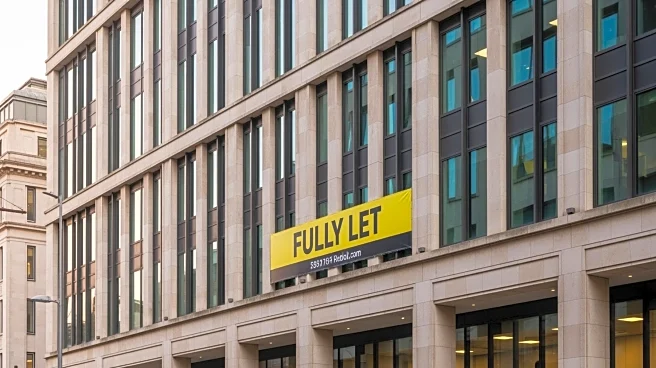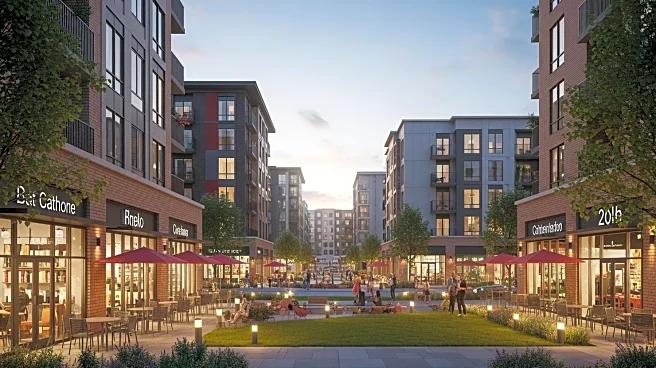What's Happening?
The historic 190 Bowery building in New York City is set to welcome a long-term office tenant, marking a significant development in the revitalization of its previously vacant spaces. The building, a former
bank constructed in 1898, was purchased by Aby Rosen's RFR in 2015 for $55 million. Since then, it has undergone modernization, although some graffiti has been preserved as a nod to the neighborhood's gritty past. The new tenant, Industrious, a company specializing in 'workplace experience,' plans to make 190 Bowery its flagship location. This move is expected to bring stability to the building, which had been used by various creative firms in the past. The ground-floor retail space is currently occupied by the trendy clothing store Supreme.
Why It's Important?
The leasing of 190 Bowery to Industrious is a notable event in the context of urban development and real estate in New York City. It highlights a trend of repurposing historic buildings to meet modern business needs, which can contribute to the economic revitalization of neighborhoods. For the NoLita and Lower East Side areas, this development could enhance the local economy by attracting more businesses and visitors. Additionally, it reflects a broader shift in the commercial real estate market towards creating dynamic and flexible work environments, which are increasingly in demand. This move could set a precedent for similar projects in other urban centers, potentially influencing real estate strategies and urban planning policies.
What's Next?
With Industrious set to establish its flagship location at 190 Bowery, the building is poised to become a hub for innovative workplace solutions. This could lead to increased foot traffic and business activity in the surrounding area, benefiting local retailers and service providers. The success of this project may encourage other real estate developers to consider similar conversions of historic or underutilized properties. Additionally, the presence of a long-term tenant like Industrious could attract other businesses to the area, further boosting the local economy and potentially leading to more investments in infrastructure and public amenities.












